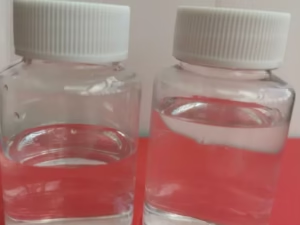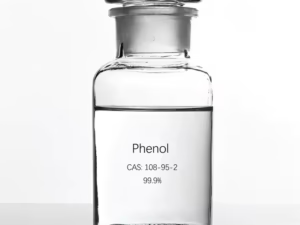Description
1,4-Butanediol: A Versatile Industrial Chemical with Diverse Applications
1,4-Butanediol (BDO), also known as tetramethylene glycol, is a colorless, viscous, organic compound widely used as an intermediate in the production of numerous industrial products. Its versatility stems from its two hydroxyl (-OH) groups, allowing it to participate in a wide range of chemical reactions and enabling it to serve as a building block for various polymers, solvents, and other valuable materials.
Production of 1,4-Butanediol:
The production of 1,4-Butanediol typically involves several methods, the most common being the Reppe process. This involves reacting acetylene with formaldehyde under high pressure and temperatures to form 1,4-butynediol, which is then hydrogenated to yield 1,4-Butanediol. Other methods include:
- Direct Oxidation of n-Butane: Catalytic oxidation of n-butane can yield maleic anhydride, which can then be reduced to 1,4-Butanediol.
- Propylene Oxide Route: Propylene oxide can be converted to allyl alcohol, which is then hydroformylated and hydrogenated to produce 1,4-Butanediol.
- Bio-based Production: Emerging technologies are exploring bio-based routes using microorganisms to convert sugars into 1,4-Butanediol, offering a more sustainable alternative.
Key Applications of 1,4-Butanediol:
The versatility of 1,4-Butanediol is reflected in its wide range of applications across various industries:
- Polyurethane (PU) Production: A significant portion of 1,4-Butanediol is used in the production of polyurethane plastics. It acts as a chain extender, contributing to the flexibility, durability, and strength of these materials. Polyurethanes are found in foams, elastomers, coatings, and adhesives.
- Tetrahydrofuran (THF) Production: THF, a highly versatile solvent, is primarily manufactured from 1,4-Butanediol. THF is widely used in the production of PVC pipes, adhesives, magnetic tapes, and as a solvent in polymer synthesis.
- Gamma-Butyrolactone (GBL) Production: GBL, another important chemical intermediate, is produced by dehydrating 1,4-Butanediol. GBL is used as a solvent, cleaning agent, and in the production of pharmaceuticals and agrochemicals.
- Polybutylene Terephthalate (PBT) Production: 1,4-Butanediol is a key component in the production of PBT, a thermoplastic engineering polymer known for its strength, rigidity, and resistance to chemicals. PBT is used in electrical connectors, automotive components, and housings.
- Solvent and Chemical Intermediate: Beyond these primary applications, 1,4-Butanediol is also used directly as a solvent in various chemical processes and as an intermediate in the synthesis of specialty chemicals, fibers, and other materials.
Safety Considerations:
While 1,4-Butanediol possesses valuable industrial applications, it’s crucial to handle it with care and adhere to safety guidelines. It can be irritating to the skin and eyes upon contact. Ingestion can lead to various health effects, and it is converted to GHB (gamma-hydroxybutyrate) in the body, making it a controlled substance in many regions due to its potential for misuse and abuse. Appropriate protective gear, such as gloves and eye protection, should always be worn when handling 1,4-Butanediol. It’s essential to consult the Material Safety Data Sheet (MSDS) for detailed safety information and handling procedures.
Future Trends:
The future of 1,4-Butanediol production is likely to focus on sustainability and cost-effectiveness. Research and development are increasingly directed towards bio-based production methods, aiming to reduce reliance on fossil fuels and minimize environmental impact. Furthermore, innovations in catalysis and process optimization aim to improve the efficiency and yield of existing production routes.
Conclusion:
1,4-Butanediol is a vital chemical intermediate with widespread applications in the production of polymers, solvents, and various other products. Its versatility and adaptability make it an indispensable component in numerous industries. While its benefits are evident, responsible handling and a focus on sustainable production practices are essential to ensure its continued safe and environmentally sound utilization.












Reviews
There are no reviews yet.